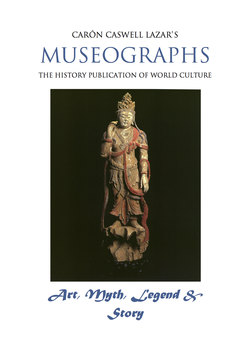Читать книгу Museographs: Art, Myth, Legend and Story - Caron Caswell Lazar - Страница 5
Exploration, Conquest & Expansion
ОглавлениеIn the beginning mythologies were relevant only to a particular people. However, inevitably exploration, conquest and the expansion of trade routes brought awareness of the existence of other mythologies, beliefs and religions — along with the unavoidable comparisons, syncretism, adaption and adoption.
Through this assimilation process a large number of references and even whole stories have transferred into the literatures of other peoples. Popular examples of this include the adoption of Christmas trees and Easter bunnies and eggs into popular celebration among Christians. In fact, these symbols of the season are rooted in northern European and Celtic paganism, the Christmas tree as a manifestation of early Druid tree worship and the bunnies and eggs as common fertility symbols appearing each spring with the renewal of the earth. Early Christians adopted these symbols, and incidentally, timing, of other people’s rites in order to make conversion to an easier process for the convertees. In the case of Christmas the date of celebrating Jesus’ nativity was actually shifted to coincide with a long-standing celebration on the northern isles, while the unofficial incorporation of spring fertility symbols enhanced the concept of a renewed world through the resurrection and ascension of the Master Christian. In actuality many scholars consider it much more likely that Jesus would have been born late spring.
Often multiple traditions — some conflicting — existed side-by-side and later writers chose the tradition that best suited their purposes, or altered details selectively. Pindar, for example, was known to have ‘moralized’ some of the myths he reproduced in his writings. A millennium later Western explorers who came into contact with the islanders of the Pacific tended to equate the myths they encountered with those they had been brought up with inside their own cultures. One result of this was an attempt on the Westerners’ part to identify a supreme being, where in fact none was actually being referred to.
The term angel derives from a Greek translation of the original Hebrew mal’akh or ‘shadow side of God’ but later came to mean messenger. In their original forms angels were not. The corporeal visage of the benevolent messengers of God are cherished by Jews, Christians and Moslems alike, historically evolved from a cross-breeding of Egyptian, Sumerian, Babylonian and Persian supernatural beings encountered by the Jews while held captive in strange lands among strange gods. This genetic interaction of ideas produced the outward appearance of the winged angels we know today. By the first century C.E. this essentially Jewish creation was adopted by the new religion and six centuries later by the Moslems. Interestingly, though most still regard the image of an angel to be winged and anthropomorphic, in recent history the outward image of blessings is giving up its wings and in some cases its corporeality altogether.
